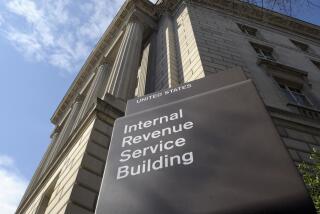Would Mitt Romney’s cap on itemized deductions work?
In this week’s presidential debate, Mitt Romney fleshed out an idea he had previously mentioned briefly as a way to pay for his proposed tax cuts – setting a cap on itemized deductions.
“I’m going to bring rates down across the board for everybody, but I’m going to limit deductions and exemptions and credits, particularly for people at the high end,” the Republican presidential nominee said.
“One way of doing that would be to say everybody gets – I’ll pick a number – $25,000 of deductions and credits. And you can decide which ones to use, your home mortgage interest deduction, charity, child tax credit and so forth. You can use those as part of filling that bucket, if you will, of deductions.”
The cap, Romney said Tuesday night, would ensure that the wealthy would not receive an outsized tax break. “I am not going to have people at the high end pay less than they’re paying now” as an overall share of U.S. taxes, he said.
Moreover, he insisted, the cap would allow him to pay for his proposed tax cuts without increasing the size of the deficit.
“Of course they add up,” he responded when Candy Crowley, the debate moderator, asked him about whether his numbers penciled out.
Politically, a cap on deductions provides an attractive solution to raising tax revenue because it avoids having to wage fights over individual deductions.
Unfortunately for Romney, however, the cap does not come close to covering the full cost of the tax plan he has proposed, according to a new analysis by the Tax Policy Center, a specialized Washington think tank. The Romney tax plan would reduce federal revenue by about $5 trillion over 10 years in addition to the cost of the Bush-era tax cuts that he would extend.
“These new estimates suggest that Romney will need to do much more than capping itemized deductions to pay for the roughly $5 trillion in rate cuts and other tax benefits he has proposed,” wrote Roberton Williams, an analyst at the nonpartisan center, which is a joint operation of the Urban Institute and the Brookings Institution.
The Tax Policy Center analysis suggested that Romney’s proposed cap would raise revenue in a “highly progressive” way because upper-income households benefit more from itemized deductions. The center found that the cap would provide considerable revenue to offset the cost of the tax cut, but would still leave a huge gap.
The center’s staff consists of former government tax experts from both Republican and Democratic administrations. Romney and his aides cited the center as an authoritative source during Republican primary debates but since then have objected to the center’s analyses of shortcomings in their tax plan.
According to the center’s analysis, a $25,000 cap would raise about $1.3 trillion over a 10-year period. That would cover roughly a quarter of the 10-year cost of Romney’s tax plan.
If Romney made the cap tighter – allowing just $17,000 in deductions and credits – he could raise $1.7 trillion. A $50,000 cap would bring in about $760 billion. At various times, Romney has cited each of those figures as a proposed cap.
The tighter cap would hit many more taxpayers. If the cap were $50,000, for example, almost all the revenue that it would raise, about 80%, would come from taxpayers with income above $500,000 a year, and less than 4% would come from taxpayers earning less than $100,000, according to the center’s analysis. That’s because very few taxpayers other than the very wealthy have deductions that total more than $50,000.
By contrast, a cap of $17,000 would get about 40% of its revenue from that top group, and about 17% from the taxpayers earning $100,000 or less.
Romney has said that he expects part of his tax cut would be paid for by additional revenue flowing into the treasury as the result of faster economic growth. Economists disagree about whether a tax cut such as the one Romney has proposed – a reduction of current tax rates by one-fifth – would significantly increase economic growth.
In response to the center’s report, the Romney campaign issued a statement that did not dispute the math, but reiterated Romney’s position that “the President and Congress working together can make the tax code simpler, more efficient, and more pro-growth.”
[For the Record, 9:51 a.m. PST Oct. 18: This post has been updated to include the Romney campaign’s response to the Tax Policy Center’s report.]
Follow Politics Now on Twitter and Facebook
Twitter: @DavidLauter
More to Read
Get the L.A. Times Politics newsletter
Deeply reported insights into legislation, politics and policy from Sacramento, Washington and beyond. In your inbox three times per week.
You may occasionally receive promotional content from the Los Angeles Times.








